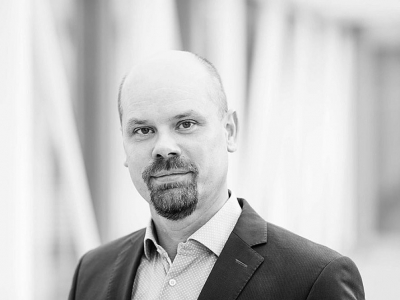1) TÍTULO:
Anyone seen an anyon?
2) ORADORES:
Jeroen van den Brink, Institute for Theoretical Solid State Physics, IFW Dresden,
Helmholtzstr, Germany.
3) RESUMEN:
Particles in our three-dimensional world must be either bosons or fermions: exchanging two identical particles either leaves the quantum mechanical wavefunction invariant (bosons) or causes a sign-change (fermions). Quantum mechanics in a world with only two space dimensions (2D) is much richer. In principle particles can exist in 2D that are "in between" bosons and fermions. Such particles, anyons, are predicted to they have very peculiar physical properties. First of all, exchanging two identical anyons produces a change of the phase of the wavefunction that is anywhere between 0 and π. Second, moving two anyons around each other in the 2D plane can even change the identity of the anyons. The latter property renders anyons essential building blocks for a future topological quantum computer.
I will introduce and discuss a number of real materials in which anyons might be observable, in particular quasi-2D honeycomb iridates and ruthenates. It will become clear that these strongly correlated magnetic materials are candidates to host a topological spin-liquid state that was predicted by A. Kitaev in 2006. There is strong experimental and theoretical evidence that in one of these materials, α-ruthenium trichloride, fractionalized quasiparticles are present, but has anyone seen an anyon?
4) MINI-BIO DE LOS ORADORES:
Jeroen van den Brink es un físico especializado en teoría de la materia condensada, actualmente profesor de la Universidad Tecnológica de Dresden (TU Dresden) y director del Institute Theoretical Physics, parte de IFW-Dresden. Es doctor desde 1997 por la Universidad de Groningen, donde realizó su tesis bajo la dirección de G. A. Sawatzky y Daniel Khomskii. Luego de ser becario de la fundación Alexander von Humboldt en el Instituto Max Planck de Stuttgart, ejerció como profesor asociado en la Universidad de Twente (1999-2002) y luego profesor en la Universidad Radboud Nijmegen (2002-2009). Posteriormente fue contratado en las posiciones que tiene actualmente. Adicionalmente, ha sido profesor visitante en varias casas de estudio, incluyendo las universidades de Stanford (2009), Harvard (2016), Washington (2019) y Amsterdam (2020). Es ampliamente reconocido por varias contribuciones en el campo de sistemas fuertemente correlacionados, la teoría de scattering inelástico de rayos X (RIXS) y también en los últimos años por contribuciones en el campo de sistemas electrónicos con topología no trivial.
INFORMACIÓN DEL COLOQUIO IB
Viernes 17/2, 14.30hs.
Duración aproximada: 45 min de exposición y luego se habilita un tiempo para preguntas.
LUGAR Y E-LUGAR:
Salón de Actos del Instituto Balseiro (con aforo) Av. Bustillo km 9,5, San Carlos de Bariloche.
El evento será transmitido en vivo por el canal de YouTube "Instituto Balseiro Coloquios": https://bit.ly/balseirocoloquios
Ver listado previo de coloquios en este link
Contacto: Esta dirección de correo electrónico está siendo protegida contra los robots de spam. Necesita tener JavaScript habilitado para poder verlo.
